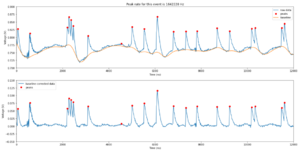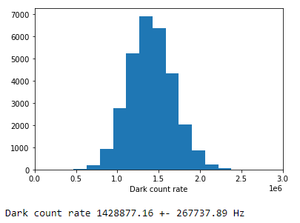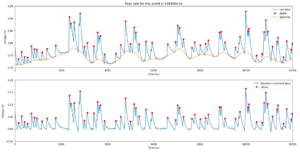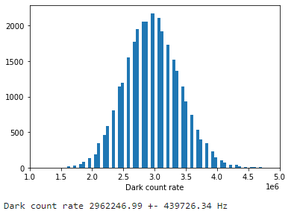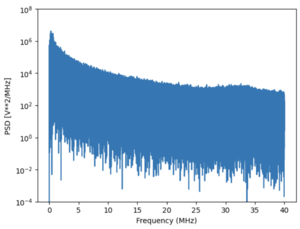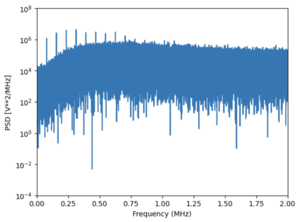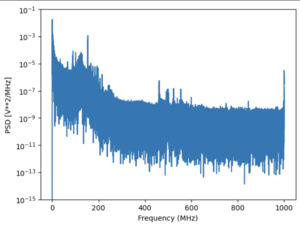Dark count measurements
We want to characterize the dark count rates of each of our individual SiPMs.
VUV SiPM 1821
On 17-11-2022 we recorded with a room temperature of 17 degrees Celcius. We took 20 times a set of 1000 waveforms and 1 set of 10,000 waveforms at a pressure of 7.4x10^-5 mbar. We also took two noise runs where after starting the run normally, the SiPM bias was turned off. We select single photo-electron peaks with a simple threshold argument, and compute the rate of all combined dark count data. This gives us a dark count rate of 1.4+-0.3 MHz. The rate is in agreement with what we would expect. Note that the dark count distribution is rather broad for a Poisson proces.
VIS SiPM 01
On 18-11-2022 we recorded with a room temperature of 18 degrees Celsius. We took 20 times a set of 1000 waveforms and 1 set of 10,000 waveforms at a pressure of 6.3x10^-5 mbar. We also took two noise runs and one run with the lamp turned on at 400nm and slightly opened slits. Note that the SiPM was in fact behind the sample holder and not directly exposed to any light from the lamp. We select single photo-electron peaks with a simple threshold argument, and compute the rate of all combined dark count data. This gives us a dark count rate of 3.0+-0.4 MHz. Also, this rate is in agreement with what we would expect.
Noise
To get some insight in the sources of noise, we computed the power spectral density (PSD). Figure 1 shows the PSD of the dark count measurement taken with the 12.5ns CAEN digitizers. When we zoom in at the region around the peak, some peaks become visible which indicate noise at these frequencies. Lucia took some data with an oscilloscope. The oscilloscope had a resolution of 0.5ns. Figure 3 shows the PSD of some data taken with this oscilloscope at 13 degrees. This signal shows some high frequency noise, which is also visible in the PSD plot.
